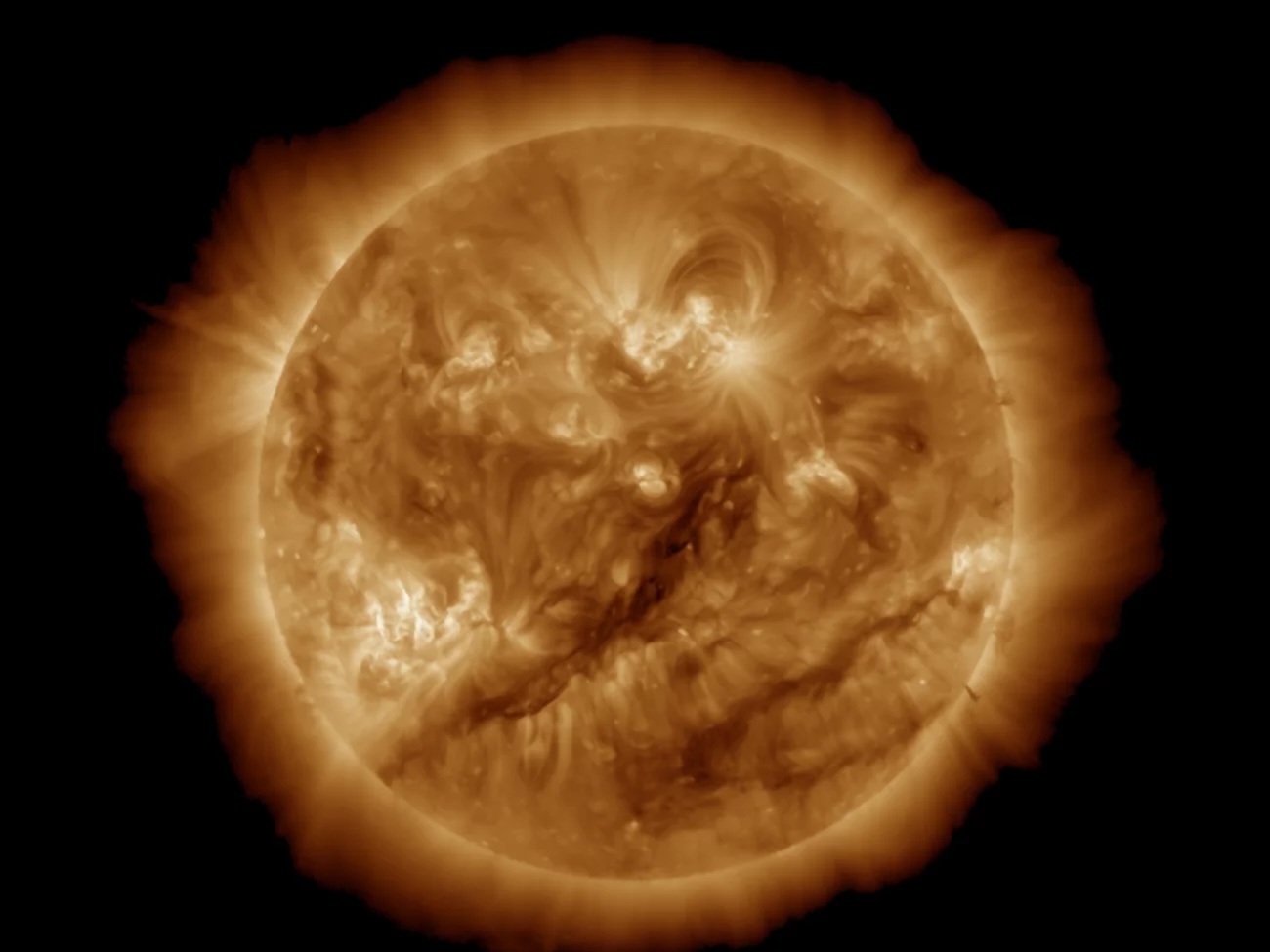4.06.2024

The sun has gone through a rotation, and the active region that triggered a huge amount of aurora activity is once again pointing toward Earth — but not directly at it.
GOES 16/Space Weather Prediction Center
The region of the sun that produced the strong activity responsible for stunning aurora sights earlier this month has rotated back around toward Earth. So, does that mean more parts of the U.S. could once again be treated to northern lights? Both the answer — and the conditions — are a little murky.
Region 3664 was responsible for that outburst of nighttime beauty. It’s now known as region 3697 (the numerical designation changes when the sun goes through a rotation).
“However, the region has significantly decayed since it was facing Earth in early May,” Shawn Dahl, a space weather forecaster at NOAA’s Space Weather Prediction Center (SWPC) in Boulder, Colo., told NPR via email.
As for the current conditions, moderate geomagnetic storm levels are possible from May 31 to June 1, according to the latest forecast from National Oceanic and Atmospheric Administration’s Space Weather Prediction Center. On a scale that runs up to G5 (for “extreme”), the agency predicts storm strength around G2, a level that normally brings only small disruptions to systems on Earth. At the G2 level, an aurora can sometimes be seen as far south as New York and Idaho.
Auroras that light up the night sky come from geomagnetic storms — which can result from solar activity such as a coronal mass ejection (or CME) erupting from the sun and sending plasma racing toward Earth.
“A CME associated with the X1.4 flare, produced by Region 3697 earlier in the period, is likely to enhance the Earth's magnetic field late on 31 May into early on 01 Jun,” the space weather center said via the X platform.
Why this show may not be quite as spectacular
Dahl says conditions don’t look favorable for the unstable and active solar region to repeat events from early May.
“It's not quite pointing directly at Earth yet, but will be more in line with Earth in the next couple of days,” he said. “CMEs expand widely and quickly as they depart the Sun and transit out into space — so much so that even when not aimed at Earth (such as the current CME that might provide some influences tonight) they can expand enough that glancing influence can occur.”
As for region 3697, Dahl says it “remains unstable and remains capable of producing additional activity as it rotates along with the Sun over the next 10 days or so.”
But there’s another factor working against eye-catching auroras: there’s currently less nighttime.
“Since we are getting longer and longer days now, it will be more difficult to see the aurora,” Dahl said, “because the windows of opportunity would have to be centered around local dark skies times (i.e. 11 p.m. to 2 a.m.).”
Two weeks ago, solar region 3664 capped a run of powerful flare activity with an X-ray flare measured at X8.7 — “the largest of this solar cycle!” the Space Weather Prediction Center declared.
Our solar cycle hasn’t peaked yet: A solar cycle normally lasts around 11 years. Our current cycle, 25, is expected to peak next year.
"Solar Cycle 25 is forecast to be a fairly weak cycle, the same strength as cycle 24,” according to the National Weather Service. “Solar maximum is expected in July 2025, with a peak of 115 sunspots.”
Quelle: npr
